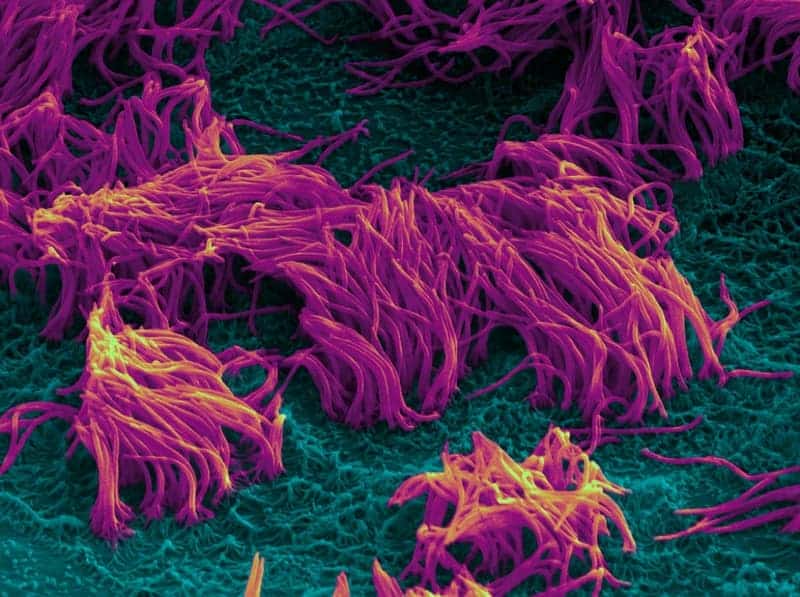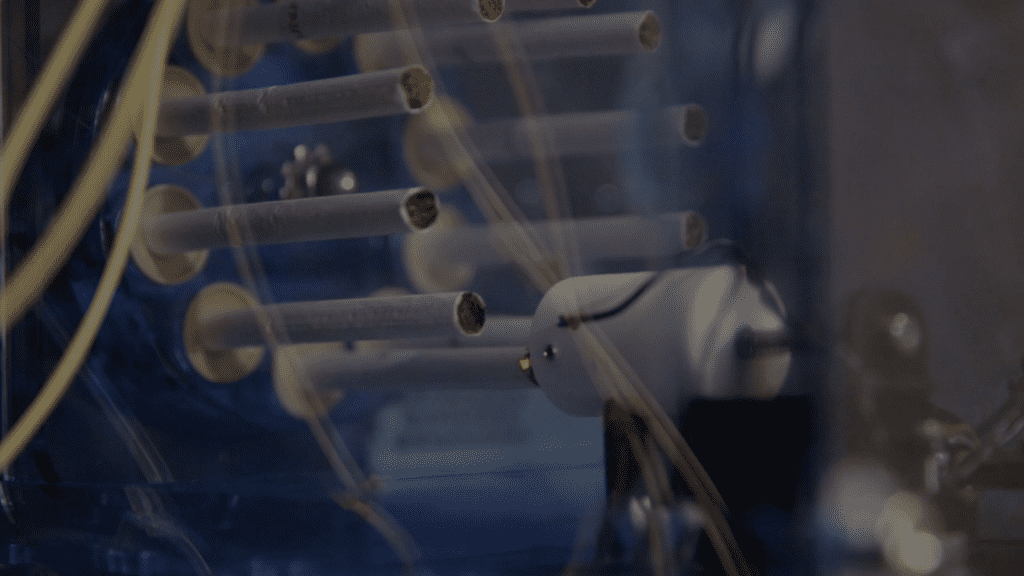Smoking is bad — so bad that only robots should do it.
To study the effects that smoking tobacco has on human health, scientists often resort to stuffing mice inside a chamber that is filled with cigarette smoke. The method is far from humane, but it’s the best thing we used to have until this real-life Bender came along.
Developed by Harvard’s Wyss Institute, this chain-smoking robot can light cigarettes at a custom intensity and frequency, mimicking the interactions that occur when people smoke — even those that occur inside the lungs.
The smoke from one of the twelve cigarettes arranged like a revolver barrel is passed through a lung on a chip, which is a device that mimics human lungs. Inside, various microchannels are filled with living lung cells, complete with mucus and the hairlike structures known as cilia that transport the mucus.
Smoke is allowed through the chip’s channels through tubes that move the fumes in and out.
The idea behind this sort of setup is to study intense coughing and lung infections that plague smokers. By using two lungs on chips — one with cells from patients with pulmonary disease, the other with cells from healthy patients — it’s possible to study the effects of smoking with unprecedented accuracy and detail. And all without having to hurt one mouse.
Already, the researchers have some interesting results to share. Because the casings of the lung on chips are transparent, they could peer right through and see what the cells were doing.
“First of all, we were able to show that the chips that were lined by cells from COPD patients showed a much bigger inflammatory response to the cigarette smoke exposure than normal, which is consistent with cigarette exposure bringing a COPD patient to the emergency room,” says Donald Ingber, one of the robot’s creators and director of the Wyss Institute, as reported in the journal Cell Systems.

Lung cilia (purple) protruding from the lung epithelium. The image was taken with a scanning electron microscope. Credit: Wyss Institute/Harvard University
The chain-smoking robot also helps explain the dreaded smoker’s cough. When the smoke comes in contact with cilia, these start beating at irregular intervals instead of their usual, constant motion. Essentially, the smoke interferes with the cleansing motion, causing smokers to cough and have more mucus. Consequently, people with pulmonary disease could be helped by treating the wayward cilia.











